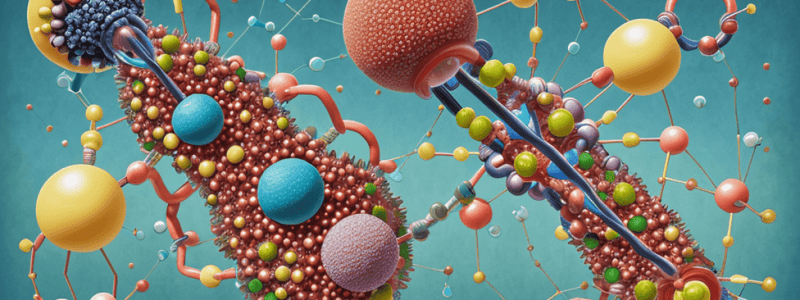Podcast
Questions and Answers
Enzymes are biological ______ that speed up chemical reactions
Enzymes are biological ______ that speed up chemical reactions
catalysts
Diffusion is the movement of molecules from an area of high concentration to an area of low concentration, down a ______ gradient
Diffusion is the movement of molecules from an area of high concentration to an area of low concentration, down a ______ gradient
concentration
Osmosis is the movement of ______ molecules across a selectively permeable membrane from an area of high ______ potential to an area of low ______ potential
Osmosis is the movement of ______ molecules across a selectively permeable membrane from an area of high ______ potential to an area of low ______ potential
water
Match the following concepts with their descriptions:
Match the following concepts with their descriptions:
Match the following terms with their definitions:
Match the following terms with their definitions:
Match the following concepts with their processes:
Match the following concepts with their processes:
What is the effect of high temperature on enzyme action?
What is the effect of high temperature on enzyme action?
What is the primary driving force behind diffusion?
What is the primary driving force behind diffusion?
How does active transport differ from simple diffusion and facilitated diffusion?
How does active transport differ from simple diffusion and facilitated diffusion?
Flashcards are hidden until you start studying




